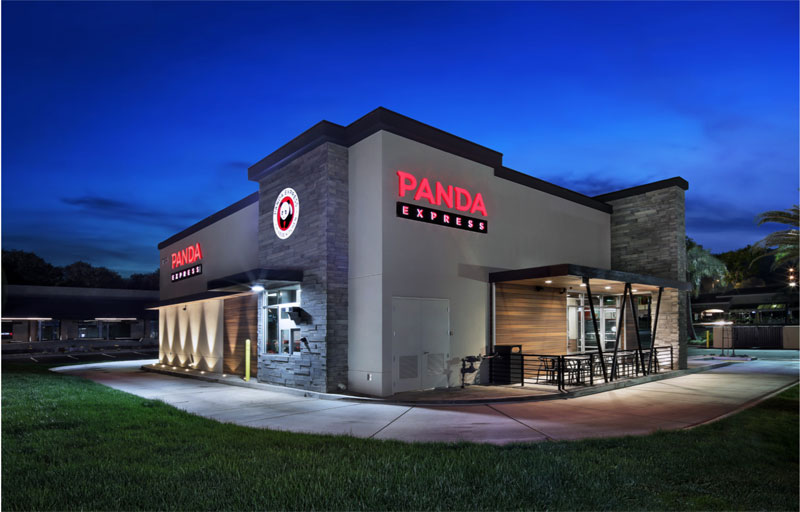A staple of the American Chinese food category with more than 2,200 locations, Panda Express made waves last summer by announcing plans for direct delivery through its Panda Delivers program. Those plans were accelerated by the pandemic, as the brand’s third-party delivery sales doubled, and included native customer delivery through its app and website.
Below is an excerpt of a Q&A exchange with Nidhin Mattappally, executive director, digital and restaurant experience, and Evelyn Wah, executive director of brand innovation, for Panda Express. Their responses have been lightly edited for length.

Nidhin Mattappally
Food On Demand: How is your native delivery program going so far, and how deep are you into this rollout?
Nidhin: It’s going really well. Currently, Panda Delivers is available at more than 1,900 locations. This channel has already become an important part of our business and as we look at our quality metrics—dropped orders, calls, delivery duration, etc.—they’re all where we want them to be. And the best part is that we’re able to have direct communication with these delivery guests and can build a deeper relationship with them.
FOD: Have you made any notable running changes to the native delivery plan after getting started?
Nidhin: Prior to launch, we redesigned our ordering website and mobile apps to closely mirror our in-store experience to make it simpler for our guests and ensure they have a frictionless digital experience. In the past few months, we’ve been creating special promotions to offer quality meals at a great value, and we’ll continue to find ways to surprise and delight our guests online, including driving ‘Panda Delivers’ orders on our website and mobile app. We’ve announced this benefit to our guests on our CRM database and are using social media as our primary channel to drive further awareness—we’ve seen great engagement from our guests thus far.
FOD: Who is doing the actual deliveries for your native delivery orders?
Nidhin: We’ve partnered with a foodservice delivery company to fulfill the ‘Panda Delivers’ online and mobile app orders.
FOD: Has any customer feedback about your native delivery program been surprising or unexpected?
Nidhin: We expected Panda Delivers to do well in urban areas given population density and those guests’ use of delivery, but it’s taken off outside of major metro areas and some of our most frequent guests order delivery from some of our most ‘rural’ stores.
FOD: After making such big changes to your off-premises strategy, what remains on your to-do list in the off-premises realm?
Nidhin: We’re continuing to build out our digital capabilities to provide our guests with a seamless experience throughout their journey. This includes elevating the design of our website and mobile apps, adding new ways for our guests to order Panda, as well as enhancing our store design to allow guests to conveniently pick up their food.

Evelyn Wah
Evelyn: We’re looking at elevating the Panda off-premise dining experience with higher-quality core offerings, premium limited-time offers at a great value and new menu innovation to better meet increased expectations and needs of our guests.
FOD: Do you see ghost kitchens as part of the brand’s future? If so, are there any ghost kitchen, delivery-only locations currently operating?
Evelyn: Nothing is off the table! At Panda, we’re constantly researching and testing new and more convenient ways to bring American Chinese classics and innovation to our guests.
FOD: Whether it’s college campuses, military bases or standalone restaurants, what type of real estate do you see as the key to Panda’s next wave of growth?
Evelyn: We are continuing to focus on standalone restaurants to grow our drive-thru locations. We have seen a significant increase in drive-thru sales and expect this to stay.
FOD: What have been the company’s biggest moves during 2020 thus far? Is there anything you’re especially proud of in terms of the company’s reaction to the pandemic?
Evelyn: First, it was implementing new health and safety protocols and ensuring compliance nationwide. Panda was the first national restaurant brand that provided face masks for all associates, starting in April. Most recently, Panda was named the safest restaurant and ranked No. 1 in the food and beverage industry by global research firm Ipsos. We’re grateful that our frontline associates’ daily efforts in upkeeping our restaurants and continuing to serve our communities is being recognized across the country.
Nidhin: At the same time, we were testing out our contactless service model and building our digital capabilities to support the increase in online ordering and delivery. One of the biggest moves is launching our delivery-as-a-service platform, Panda Delivers, on our website and app—we sped up that project by half a year! I am most proud of how nimble our company has been to adapt to guests’ current needs and our vision for the future as we continue to navigate through the pandemic and post-pandemic landscape.
FOD: For each of you, personally, what has been the most difficult part of this pandemic?
Evelyn: The most difficult part is that this pandemic is a human crisis. It doesn’t just take a toll on the human body but also emotional and mental well-being. The one question that guides us in every decision we make is, ‘What is the right thing to do for our people and our communities?’ As long as we go back to that question, we always find our way and a solution to the problem at hand. The uncertainty we experienced and continue to is one of the reasons why my team and I created the Panda COVID-19 Operating Guide to help support other local retail businesses that may need guidance around training and best practices.
Nidhin: I oversee the Guest Cares Team, and they have the hardest job and one of the most important jobs—to care for our guests and provide clarity during a time of uncertainty. As expected, our team experienced an influx of all types of guest inquiries and took the time to answer each question with transparency and empathy. Despite the challenges and long days, our team makes sure that our guests and their questions are treated with compassion during this emotionally-taxing time. We’ve found that a little kindness goes a long way in building trust and affinity.
FOD: Where is the company at with its Panda Promise five-year menu update plan?
Evelyn: We have been working behind the scenes with our suppliers and culinary team to implement changes at scale in various aspects. This promise we are making to our valued guests will take time, but we are dedicated to making positive changes.
So far, we’ve reduced sodium in seven entrees and sides, ranging anywhere from 3 percent to over 50 percent. It ranges because palate adjustments are a long-term game, and the chefs are taking a more gradual approach to meet guest expectations. For example, when we relaunched the veggie dish, Super Greens, we reduced the sodium by over 50 percent and Broccoli Beef by over 20 percent, while still delivering bold flavor. We are also on track to completely remove high-fructose corn syrup from our dishes by the end of next year. We also serve chickens raised without antibiotics on our menu and have introduced cage-free eggs this year, with the goal of nationwide adoption by 2025.
FOD: Anything else you’d like to add?
Nidhin: Panda Express has become the first in the restaurant category to launch a purely virtual fundraising program for nonprofit organizations to raise money and supporters nationwide can participate and not be beholden to their local Panda Express. Organizations can use the full power of Panda’s nationwide network of restaurants through online ordering for delivery or takeout. When an online order is placed using the designated code at checkout, Panda Express donates 28 percent of pre-tax sales to the organization.


